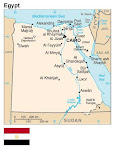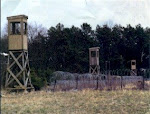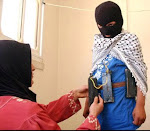 DEBKAfile's military sources reveal a secret war waged by the US, Israel and Egypt to shut down Iran's serpentine maritime routes through the Red Sea and Suez for refilling Hamas' depleted arsenal by sea. After Hamas lost an estimated 60 percent of its weapons stocks to Israeli bombardments, Iran enlisted Somali pirates to step up the flow of smuggled hardware to Gaza. Tehran is rearming the Palestinian Islamists at top speed to persuade them to carry on the war against Israel and not surrender to Egypt's ceasefire terms. According to our military sources, the Iranian sealift is conducted along three routes:
DEBKAfile's military sources reveal a secret war waged by the US, Israel and Egypt to shut down Iran's serpentine maritime routes through the Red Sea and Suez for refilling Hamas' depleted arsenal by sea. After Hamas lost an estimated 60 percent of its weapons stocks to Israeli bombardments, Iran enlisted Somali pirates to step up the flow of smuggled hardware to Gaza. Tehran is rearming the Palestinian Islamists at top speed to persuade them to carry on the war against Israel and not surrender to Egypt's ceasefire terms. According to our military sources, the Iranian sealift is conducted along three routes:1. The Iranian segment: Iranian freighters from the Persian Gulf port of Bandar Abbas sail to the Gulf of Suez. Some are intercepted by the American warships patrolling the sea against Somali pirates. US Marines board the ships and confiscate any weapons cargoes in their holds. But not all are caught; some of the Iranian freighters, especially the small vessels, escape the anti-piracy net.Western intelligence informants report that in the past week, Iranian agents hired Somali pirates to rendezvous with their freighters before they entered the Gulf of Aden and Red Sea, offload the weapons and carry them in small Somali craft to Eritrea. The pirates have strong ties with Eritrea.The Iranian freighters sail straight back to Bandar Abbas to reload. 2. The Eritrean route: Some of the Iranian arms freighters put into the Eritrean port of Assab to unload the cargoes, which are then consigned to Sudan, where the authorities turn a blind eye, for transit to southern Egypt. At that point, they are picked up by Egyptian smuggling gangs and carried by boat to Sinai shores.
3. The European route: The Balkan ports at Montenegro and Croatia are the starting points for freighters laden with containers carrying weapons for Hamas - mostly mortars and anti-air and anti-tank missiles. They head for the Suez Canal where they drop their cargoes overboard for waiting pirates' boats to collect.
DEBKAfile's military sources reveal that Iran's seaborne arms corridor to Hamas depends heavily on three Sinai Bedouin tribes: The Tarabin, which controls areas adjoining the Israeli and Gazan borders; the Tiyaha, which rule central Sinai; and the Azazmeh, whose wide spread covers northern Sinai, the Israeli Negev, Jordan and Syria. They form a human chain to relay the Iranian shipments, including heavy Grad rockets, into the Gaza Strip.
As in the days of Noah...






















































































.bmp)

























.bmp)